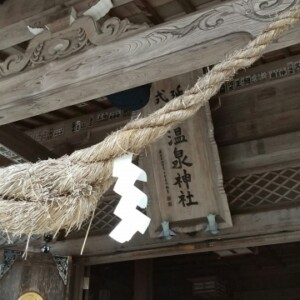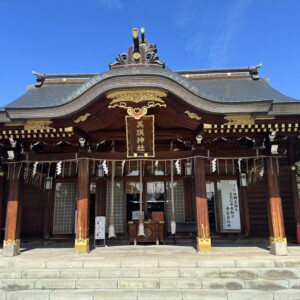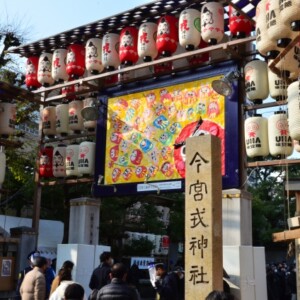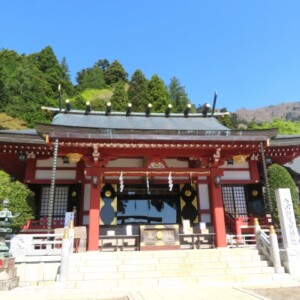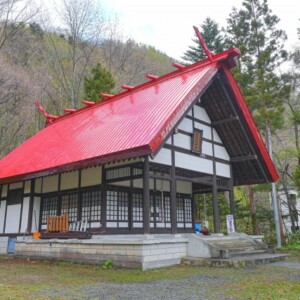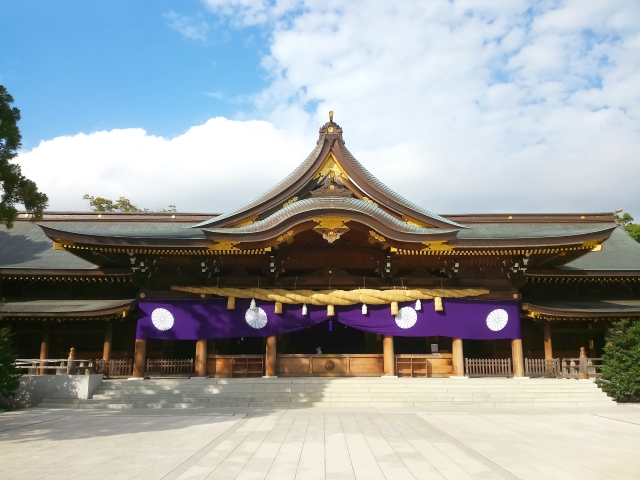
Samukawa Shrine|A complete guide to the history and visitation of Sagamiguni Ichinomiya, the only shrine in Japan that is worshipped as a guardian deity for the protection of all directions.
Samukawa Shrine, located in Samukawa-cho, Takaza-gun, Kanagawa Prefecture, is the only shrine in Japan that has been worshipped for about 1,600 years as the guardian deity of protection from all directions. The shrine is known for its divine power to protect people from all kinds of misfortunes, including geographical features, family features, direction, and the day of the week, and attracts approximately 2 million worshippers annually.
Outline and basic information about Samukawa Shrine
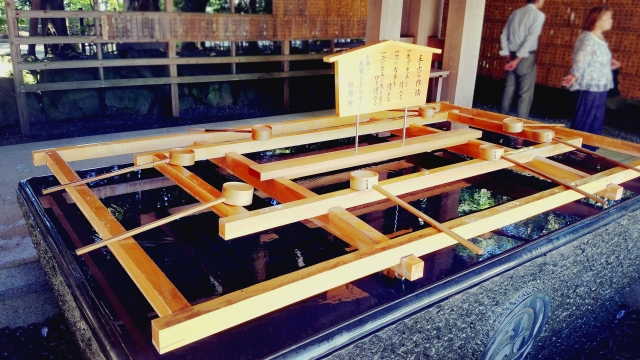
Samukawa Shrine has a prestigious status as the first shrine in Sagamiguni, and has long been revered by the Imperial Court and samurai families. Even today, many worshippers from all over the country visit the shrine to seek its divine virtues as a guardian deity to protect them from all directions.
History and Origin
It is said that the shrine was founded in the reign of Emperor Yusaku (457-479), when the imperial court offered a votive offering to the shrine, making it an ancient shrine with a history of more than 1,600 years. A record of the shrine’s construction in 727 (4th year of the Jingame Era) is also left behind, testifying to its antiquity.
In the Engishiki Shinmeitosho (the Engi Shiki Shinmeicho) of 927, it was listed as the only Meishin Taisha in Sagami Province, a highly prestigious shrine that is entrusted with the Meishin Festival by the Imperial Court. In the medieval period, the shrine was deeply revered by successive rulers, including Minamoto no Yoritomo and the Odawara Hojo clan for the construction of the shrine buildings, Shingen Takeda for the dedication of his helmet, and generations of the Tokugawa family for the donation of shrine territory.
In the Meiji Era (1868-1912), the shrine was listed as a Kanagawa Prefecture Chusha in 1873, and in 1907 it was promoted to the status of Kokuhyo Chusha, and currently occupies an important position as an annexed shrine of the Jinja Honcho (the Shinto Shrine Headquarters).
Deities and Benefits
The two deities of Samukawa Shrine are Samukawa Hiko no Mikoto and Samukawa Hime no Mikoto, together called Samukawa Daimyojin. These deities are said to be the parent deities of Kanto, who pioneered the development of the Kanto region, centering on Sagami Province, provided the way for all kinds of industries, and guided the development of the roots of human life, including food, clothing, and shelter.
The greatest feature of Samukawa Shrine is that it is the nation’s only deity that protects people in all directions. Happo-no-suki is a divine virtue that removes all misfortunes and calamities caused by geographical features, family aspect, direction, and day of the week, and brings prosperity to the family business and happiness to the people.
Sightseeing spots and features of Samukawa Shrine
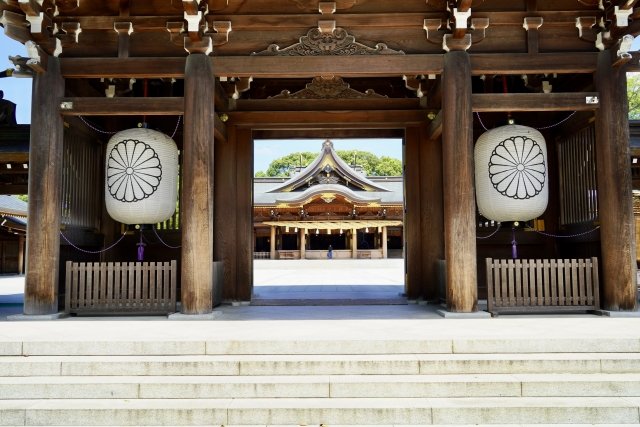
The precincts of Samukawa Shrine are dotted with many attractions, ranging from historical buildings to beautiful nature. In particular, the unique layout and structure befitting a guardian deity of the eight directions is a valuable feature that cannot be seen in other shrines.
Architectural and Structural Attractions
The approach to Samukawa Shrine begins with Ichinotorii, located 1 km south of the shrine grounds near the JR Sagami Line crossing, followed by Ninotorii (Otorii) in the middle of the approach and Sanotorii, the last torii at the entrance to the shrine grounds. The Ninotorii, 16 m high and made of reinforced concrete, is known as the largest torii in Kanagawa Prefecture.
The shrine pavilion of Samukawa Shrine faces southwest, not south or east as is common, because it is located in the back omonto of Edo, and has a special meaning as a shrine that is responsible for the removal of all directions.
The main hall of worship is located in front of the shrine gate, and the main hall of worship is located behind it. The current hall of worship was completed as a commemorative project for the dedication of the Heisei era, and has a solemn atmosphere.
Nature and scenic beauty
Next to the San-no-torii gate, there is a pond called “Shin-ike” with a fountain, and a bronze sculpture called “Shakyo (stone bridge)” is enshrined at the back of the pond. This sculpture was created by Junsei Harada, a sculptor living in Samukawa Town, to commemorate the 20th anniversary of “Sagami Takigi Noh,” an annual event held since 1970.
Since 2001, from the New Year until Setsubun in February, the Shinmon gate has been decorated with Geishun Nebuta (New Year’s floats) named after myths, and is illuminated at night. These decorations add gorgeous colors to the temple grounds each season.
The trees on the temple grounds show their seasonal beauty, especially during the cherry blossom season in spring and the autumn foliage season in fall, when many visitors come to the temple to enjoy the beauty of nature.
Cultural Properties and Important Collections
When Shingen Takeda attacked Odawara Castle in October of the 12th year of Eiroku (1569), he stopped by Samukawa Shrine and dedicated a helmet, which is still preserved today and is recognized as an important art object by Kanagawa Prefecture. This helmet is a valuable cultural asset that tells of the history of Samukawa Shrine and its deep connection with Takeda Shingen.
In 1822, during the Edo period, Hiroatsu Irisawa of Ichinomiya Village in Sagami Province dedicated an arithmetic frame to Samukawa Shrine. Its content is the same as the “Theorem of the Six-Ball Chain” published by Frederick Soddy in 1936, which was discovered more than 100 years earlier by Irisawa. This arithmetic sum is known worldwide as an indication of the high standard of Japanese arithmetic at that time.
The old mask of Ou used in the Namida Utsumai ritual of the Prayer Festival was designated as an important cultural property by the town of Samukawa in 1976, which shows the importance of the traditional rituals of the shrine.
Worship and Prayer Information
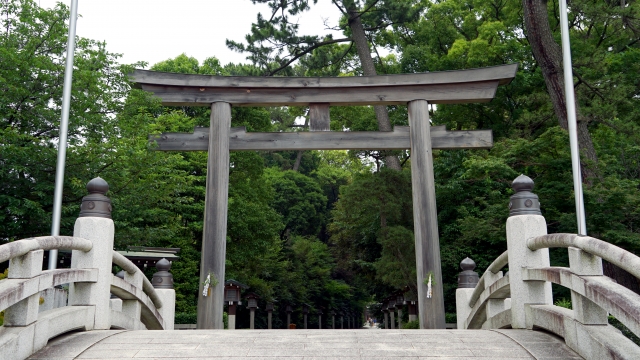
At Samukawa Shrine, visitors can receive a variety of prayers, mainly for the protection of the eight directions. As the only shrine in Japan that offers prayers for protection from all directions, many visitors come to the shrine to pray for life’s milestones and to ward off bad luck and misfortune.
Manners and Etiquette for Happo-yoshi Prayers
Prayers for the protection of the eight directions are performed at Samukawa Shrine to protect the body from all bad lucks and disasters that may befall it. The shrine is known as the shrine with the largest number of ascension prayers in Japan, with approximately 300,000 ascension prayers conducted each year, more than 10 times the 30,000 ascension prayers held annually at the second largest shrine in Japan.
Prayers are accepted from 8:00 a.m. to 5:00 p.m. throughout the year, and reservations are not required. Visitors are welcome to come on the day of their visit and wait in the waiting room until the prayer service is ready.
Prayer fees range from 3,000 yen for the medium ceremony to more than 50,000 yen for the perpetual ceremony, and the contents of the gifts differ depending on the ceremony. In the middle ceremony, you can receive a nameplate sword, amulet, amulet, sacred clay, chopsticks, offerings, and sacred wine.
Annual and Seasonal Events
Various festivals are held throughout the year at Samukawa Shrine. In the spring, the shrine performs the “Prayer Festival” and the “Rice Field Utsudaimai Ritual,” in which priests and members of the shrine wear traditional masks and sing and dance a kagura song while plowing the fields and sowing seeds to pray for a bountiful harvest.
In May, the Kunifu Festival (Konomachi) is held, and five shrines (Ichinomiya Samukawa Shrine, Ninomiya Kawagu Shrine, Sannomiya Hiita Shrine, Yonomiya Maetori Shrine, and Hiratsuka Hachimangu Shrine) gather at Kamijariyama in Kunifu, Oiso Town to pray for national security and a good harvest. The ancient “Za-To” ceremony is especially famous, and was designated as an Intangible Folk Cultural Asset of Kanagawa Prefecture in 1978.
In summer, the Hamadori Festival is held, and the portable shrines leave the shrine before dawn, and the portable shrines of the shrines in Samukawa Town and Chigasaki City gather at the beach of Chigasaki Minamiko. This is a grand festival with about 40 portable shrines dancing wildly among the crowds of tens of thousands of people, bathed in the rising sun on the shores of dawn, and was designated as an Intangible Folk Cultural Asset of Kanagawa Prefecture in 1978.
In autumn, Sagami Takigi Noh is held, and is performed in the evening as a memorial service for the heroic spirits of the nation’s defenders and a prayer for peace. In the Yabusame (horseback archery) ritual, the Takeda school of horseback archery, which has been practiced since the Kamakura period (1185-1333), shoots five-colored targets from a fast-riding horse to pray for peace and a bountiful harvest.
Red Seal and Charm Information
Red seals can be obtained at the shrine office or at the prayer desk, and red seal books can be purchased at the shrine store, Chinju-no-mori Koyo, and the sanjunden. There is no set fee for red seals, so visitors are asked to pay what they feel comfortable paying.
The amulet of Samukawa Shrine contains the divine virtues of the Samukawa Great Myojin, who has been repelling misfortune from all directions and bestowing good fortune since ancient times, and our priests perform purification and prayers. The shrine is open from 8:00 a.m. to 4:30 p.m. throughout the year.
The “Happo Yoshiwari Lucky Charms” come in five colors and are available in pouch or card form. Each color has a different wish: yellow for good luck in money and business, light blue for better grades and victory, red for good luck in marriage and family happiness, purple for recovery of health and physical safety, and white for good luck, good luck, and fulfillment of all wishes.
In addition, the shrine also offers various omifuda, or sacred amulets, such as marijuana to ward off all directions, marijuana to ward off fire, and marijuana to ward off theft, as well as the “Dai-no-Mamori” amulet to ward off misfortune, to accommodate the various wishes of visitors.
Special visit to Mt.
The shrine has a special sanctuary, “Jintakesan Shrine Garden,” which can be entered only by those who have prayed at the shrine. This shrine garden is one of the most sacred places in Samukawa Shrine and is carefully protected.
How to enter the sanctuary
Kantakeyama Shinen is located behind the main shrine building and is a sanctuary that only those who have prayed may enter. The garden used to be a no-entry area, but in 2009, it was renovated into a Shinto garden with a Japanese garden, a teahouse, and a museum.
To enter the garden, visitors are required to pray at the Samukawa Shrine and receive an entrance ticket after the prayer. Without the ticket, you cannot enter the shrine garden, so you cannot visit the garden alone.
The shrine garden is a quiet space with clear air, and there is a hand-watering basin in front of the outer gate and “Namba no Koike”, which has been located directly behind the main shrine building since ancient times. This is considered to be the most sacred place deeply related to the origin of the founding of Samukawa Shrine.
Highlights of the Houtoku Museum
The Houtoku Shiryokan, located in the shrine garden, exhibits interesting materials on the history of the shrine and the belief in the Happo-yoshi, the five elements of Yin-Yang and the four deities that govern the directions of the sun and the moon. The museum is open from 9:00 a.m. to 4:00 p.m. and can be visited freely.
Visitors to the museum can gain a deeper understanding of the divine virtues of happo-yoshi, and learn about the ancient wisdom and philosophy of direction and day. In particular, the museum explains in detail the concept of direction based on the Yin-Yang and Five Elements philosophy, and the concept of directional protection by the four deities (Blue Dragon, White Tiger, Suzaku, and Genbu).
There is also a teahouse in the shrine garden, where visitors can take a rest in the tranquil sanctuary after praying and visiting the shrine.
Access/Use Information
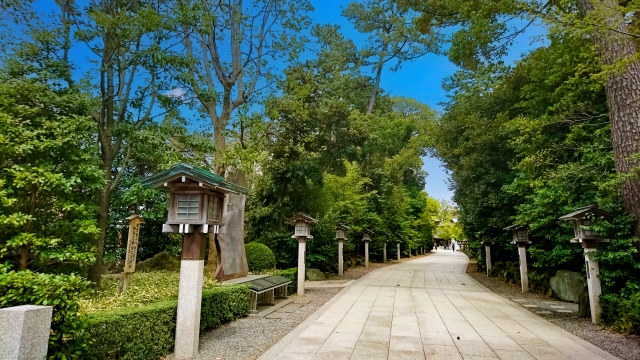
Samukawa Shrine is located in Samukawa-cho, Takaza-gun, Kanagawa Prefecture, and is easily accessible by train or car. Detailed information on transportation and hours of operation for visiting the shrine is provided below.
Transportation Access
Samukawa Shrine is located near the Sagami River in Kanagawa Prefecture, between Ebina and Kayagasaki, and the nearest station is Miyayama Station on the JR Sagami Line. It is a very convenient 5-minute walk from Miyayama Station.
There are several train routes available: from Shinagawa Station or Odawara Station on the JR Tokaido Line to Chigasaki Station, and then to Miyayama Station on the JR Sagami Line, or from Shinjuku Station or Yokohama Station on the Odakyu Line to Ebina Station, and then to Miyayama Station on the JR Sagami Line.
For those who wish to walk from Ichino-torii to Omotesando-sando, getting off at Samukawa Station is recommended, and it is a 19-minute walk from Samukawa Station on the JR Sagami Line. Samukawa Station, the main station of Samukawa Town, is close to Ichinotorii, but visitors are advised to get off at Miyayama Station, as it requires a 20-minute walk from there along the approach to the shrine.
If accessing by car, it is approximately 3 minutes from the Samukawa Kita Interchange on the Ken-O Expressway, and there is a parking lot for worshippers in the vicinity.
Hours, fees, and parking information
Samukawa Shrine is open from 6:00 a.m. to sunset, and visitors may use the money box in front of the shrine gate during the rest of the day. The shrine is open for worship all year round.
There is no fee to visit the shrine, but a prayer fee is required if you wish to pray. Prayer fees range from 3,000 yen for a medium ceremony to more than 50,000 yen for a permanent ceremony.
There are several free parking lots for worshippers, and the first parking lot is the closest to the main shrine. We recommend that you consider using public transportation, especially during peak season such as Hatsumode (New Year’s visit to the shrine).
If you wish to enter the Jyotaku-san Shinen, you must undergo a prayer service, and there is no additional charge for this service. You are also free to visit the Houtoku Museum in the shrine garden.
<Address> 3916 Miyayama, Samukawa-cho, Takaza-gun, Kanagawa 253-0195
Reference site
Official website of Samukawa Shrine: https://samukawajinjya.jp/



